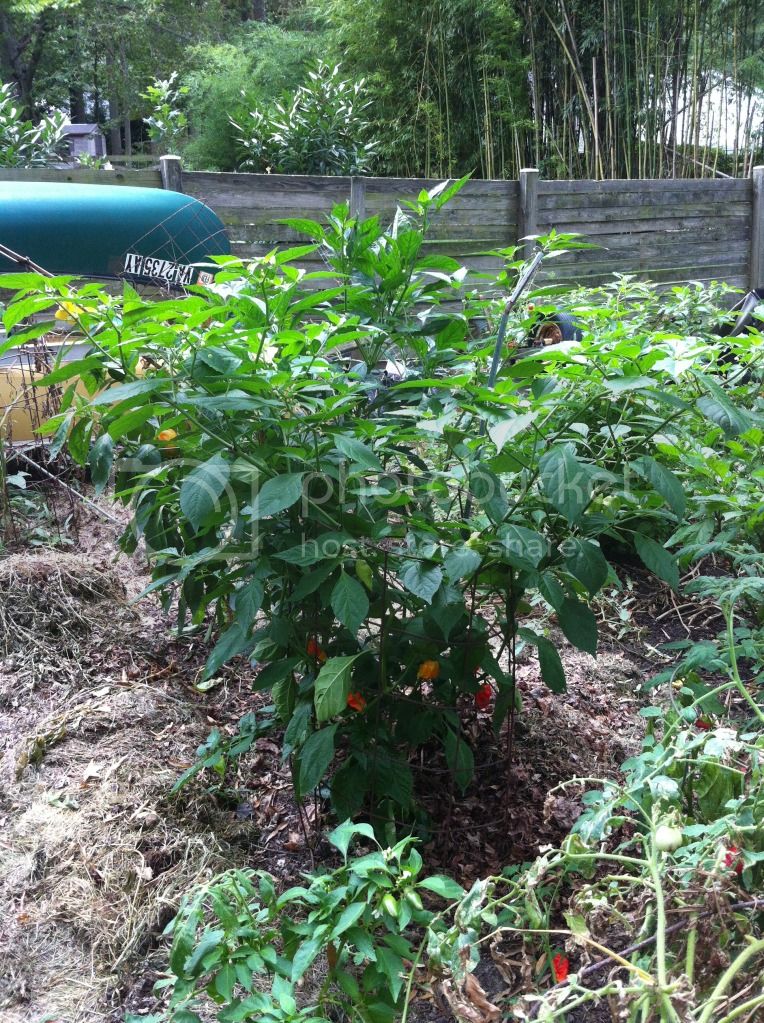from what i understand, hardwood chips deplete the soil of nitrogen faster than soft wood chips. BUT, last year we tilled in a giant pile of mulch and this was grown directly on top of it



millworkman said:I thought he only mixed them the first year and had to pour on the nitrogen to make up for it ? Thats why you dont till them in. If you do thats where nitrogen issues come from not from them laid on top.
I was thinking the same the other day. Some people really do have to till their gardens every year, orange clay soil comes to mind, unless they transform their soil with tons of compost.Peptacular said:I can see both points of the argument here. Even though I'm growing extremely small scale, I felt the need to till because my soil is extremely compacted clay. Honestly, after a month I saw exponentially more worms planting in the tilled soil than untilled areas I was digging even deeper in for non garden purposes.
Although maybe that was more due to the compost I tilled in than the actual tilling. All I'm saying is what works for one person may not for another.
Different strokes for different folks.


Busy said:I knew that Pepper Guru had to have plants that were nothing short of amazing when I threw my hat in the ring. I'm not trying to disprove organic methods, destroy the planet, or anything like that lol. Remember the "King of the hill" episode when Hank wanted to join the cook-off with propane? Haha... well I guess that's me! All hoopla aside I'm ordering my seed and promix tomorrow, and rest assured that I'm the kind of guy that knows that maybe I won't, but maybe I will. And there will be a post to track the methods and progress from start to finish. So away we go!
Thanks man! Nice to know someone gets it!
Proud Marine Dad said:Nice plants windchicken. Do you use a drip watering system since they are mounded so much?
windchicken said:Hi Jetchuka...I believe the idea with the wood chips, the orange clay (You're talking about my country garden there!), and the no-tilling ever, is that as long as one avoids walking on the beds or driving a tractor across them, that the porosity and permeability are maintained and even improved by the biologic action taking place in the soil, mostly that of earthworms—Geologists call the effect "bioturbation" because the constant agitation and even overturning of the sediments by various animals prevents it from becoming compacted and stratified...
Here's a pik of the soil in my three-year old bed at my house. This very loose, "spongy", and extremely fertile soil has not been disturbed or amended since 2011. The natural surface sediment in this area is very dense, dark brown, alluvial clay...It appears and behaves very much like 90% cacao dark chocolate...All I do is "re-dress" the mulch layer from time to time with fresh hardwood chips:

These plants are growing in the above bed: 6 of Seven Pot Yellow (THSC) and 6 of NagaBrain (romy6):

Awesome. I figured you would have a lot of runoff but with a lot of mulch that would keep it more in place.windchicken said:
Thanks Mike! I only water about once a week, with a regular water hose and spray head. The mulch layer is very thick....That seems to be what makes the difference...
Proud Marine Dad said:Awesome. I figured you would have a lot of runoff but with a lot of mulch that would keep it more in place.
Pepper-Guru said:man you really shred that stuff up. each piece of mulch around an 1/8x1/2 inch long? bet that breaks down nice and fast. when you dig down is there just mycelium strands going everywhere?
